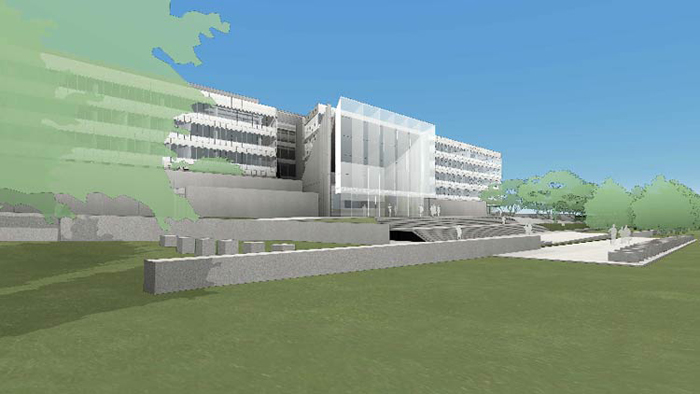
On Saturday 8th August 2009, The Canberra Times ran an editorial piece titled “Still time to settle ASIO HQ worries”. This piece discusses the politics behind the decision to rush approval of the ASIO HQ building in it’s current location and large scale.
Is the Parliamentary Triangle a precinct set aside for Australia’s most important national institutions an appropriate place for the headquarters of a large security intelligence agency, bearing in mind that the imposing building will, after Parliament House, be the largest edifice in the district?
That might be a matter of architectural preference and personal taste. But what if, additionally, there were fears that the design and siting of the new building were inconsistent with the National Capital Plan, and in particular the Griffin Legacy Amendments, and that it would dominate the northern vistas of Lake Burley Griffin to the point of overshadowing even the Australian War Memorial?
It is a largely academic argument, since site work on the new $600million ASIO headquarters on Constitution Avenue has already begun, but the speed with which the project was approved by cabinet (the first money was set aside in the 2006 federal budget) and implemented has led many Canberrans to question whether the integrity of the Parliamentary Triangle and the National Capital Plan have been trumped by a political imperative and the need for the executive to be seen at all times to be proactive on national security.
Some also wonder whether the National Capital Authority, which normally subjects any proposed addition to the Parliamentary Triangle (even one as humble as a lakeside cafe) to close scrutiny, was more or less obliged to rubber-stamp the project.
The NCA has denied the proposed building will be inconsistent with the National Capital Plan, or that it was exempt from the normal review and consultation processes. But there are lingering concerns the reviews were inordinately rapid, and that the time allowed for public consultation was brief.
What is not in doubt is the fact that the project was exempted from parliamentary scrutiny on the grounds that it ”would not be in the public interest”.
At the time, the then Labor caucus chairman and a member of the Joint Committee on Intelligence and Security, Daryl Melham, was critical of the exemption, but Labor saw no reason to lift the exemption when it came to power in November 2007.
In 2005, Allan Taylor (a former ASIO head) recommended to the then Coalition government that the agency’s resources and staffing levels be substantially increased (doubled in fact) by 2010 to ensure it had the capability to meet current and future security requirements.
To house the enlarged staff (about 1860 people), the government concluded it would be appropriate to build ASIO a new headquarters.
The site, between Constitution Avenue and Parkes Way, next to Anzac Park East, was chosen to ensure ASIO remained close to the other national security agencies based at Russell Hill.
According to ASIO itself, the ”concept design” was developed carefully to ensure the new building could take its place among the national institutions it would border.
However, it is not the proposed building’s aesthetics that concern its many critics. Rather it is its bulk, and the fact that it will be largely out of place on an avenue which the NCA intends, eventually, to be a lively and dynamic thoroughfare, indeed ”a unique street for Canberra, with broad, leafy pedestrian areas, elegant street furniture and integrated public art”.
This week ACT Liberal Senator Gary Humphries added his voice to the debate, suggesting that the height of the building be reduced by at least two storeys to address concerns about the interruption of the lakeside vista around the Australian War Memorial.
He called on the NCA to use its powers ”to limit the size of the building in the interest of our precious landscape”.
Setting aside whether Humphries would have felt duty-bound to make such a call had the Coalition still been in government, his concerns may reinvigorate the debate.
The NCA and the Government will maintain the matter is settled, but with construction having barely begun, there is still time to tweak the design.
While there are good arguments for ensuring our intelligence agencies have the resources they need to adequately carry out their tasks, there is no requirement or imperative that they maintain an overweening presence in our daily lives. Such a view might be considered appropriate in Pyongyang or Naypidaw (the new capital of Burma), but it is unbecoming for the capital city of a liberal democracy such as Australia.
Note: copyright of the material in this clipping resides with Fairfax Media. Usage permitted in accordance with the Australian Copyright Act 1968, Section 42: Fair dealing for purpose of reporting news. Source: The Canberra Times – 08 August 2009.

